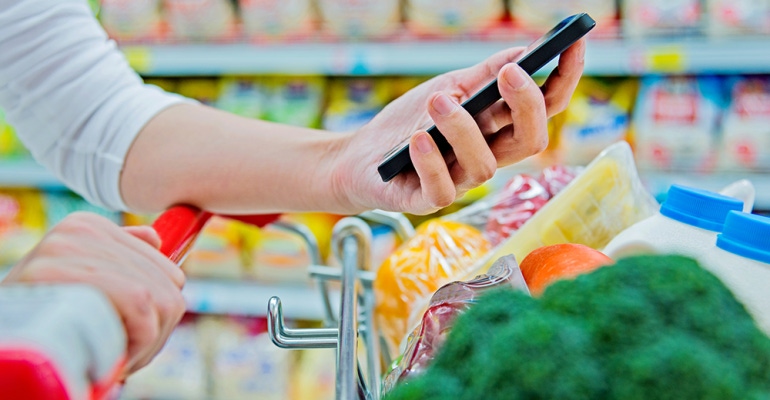Execution of delivery and pickup services key to winning more sales.
December 20, 2018

The steady rollout of delivery and pickup services is shifting online grocery sales more to brick-and-mortar retailers, according to Brick Meets Click.
In 2019, companies that provide online grocery delivery and pickup on demand stand to grow sales 25% to 30%, the Barrington, Ill.-based strategic advisory firm projected. Overall U.S. consumer spending online for groceries will rise an estimated 15% next year, boosting online share of grocery sales to 6.3%.
 To win more online grocery sales and market share, retailers offering delivery and pickup service must focus on improving the shopping experience and producing better outcomes for shoppers, noted David Bishop (left), partner at Brick Meets Click.
To win more online grocery sales and market share, retailers offering delivery and pickup service must focus on improving the shopping experience and producing better outcomes for shoppers, noted David Bishop (left), partner at Brick Meets Click.
“It ultimately comes down to creating an experience that customers perceive as a more valuable alternative to shopping, one that better fits the way they want to select and get their groceries,” he explained. “While the implications are straightforward, excelling at execution is more challenging. Providers have to understand whether winning more sales depends on simply improving execution, requires refining elements of the strategy or some combination of both.”
Increased access to online grocery shopping — especially over the past year — has fueled the market, Brick Meets Click said.
Although Internet-connected U.S. households have been able to buy groceries from e-tail giant Amazon for years, only 69% of those consumers had access to at least one online grocery delivery or pickup service. Heavy investment in and accelerated deployment of these services by national, regional and local food retailers, however, hoisted online grocery access to 81% of households in 2018. Brick Meets Click forecasts access to climb to 90% in 2019.
“Increasing the number of households who have access to online grocery shopping services with home delivery or pickup could add almost two points to the percentage of U.S. households who buy groceries online, pushing the 2019 monthly rate past 25% at the national level,” Bishop said. “At the same time, this will offer a meaningful boost to particular providers in those market areas, as we expect that most of the sales generated by new households going online for groceries will flow toward the brick-and-mortar delivery or pickup providers.”
Households have found more benefits to using an online delivery or pickup service from a brick-and-mortar grocery retailer versus buying from Amazon, Brick Meets Click said. The reason: Delivery and pickup services satisfy a broader range of household grocery needs, whereas Amazon may just help customers buy hard-to-find items or set up recurring orders of some essential groceries to be received in two or three days.
Brick Meets Click found that households that purchase groceries via a retailer’s online delivery or pickup service place 1.9 orders per month, compared with 1.6 orders for those using Amazon. What’s more, households using a grocer’s delivery or pickup service spend much more per order compared with those using Amazon — an average of $105 versus $46.
On a monthly basis, that means households using a brick-and-mortar retailer’s online grocery delivery or pickup service spend almost three times more ($200) than households buying groceries through Amazon ($74), Brick Meets Click observed.
“Whether an online grocery shopper uses delivery or pickup, both services offer shoppers greater convenience, more control and better ability to accomplish more of the household’s grocery shopping than providers who ship orders to the home in two or even three days,” Bishop said.
“Where else can a grocery shopper receive an order in one hour or less, select a specific time slot for receiving the order and get almost all the same things as when shopping in the store?” he added.

About the Author(s)
You May Also Like




